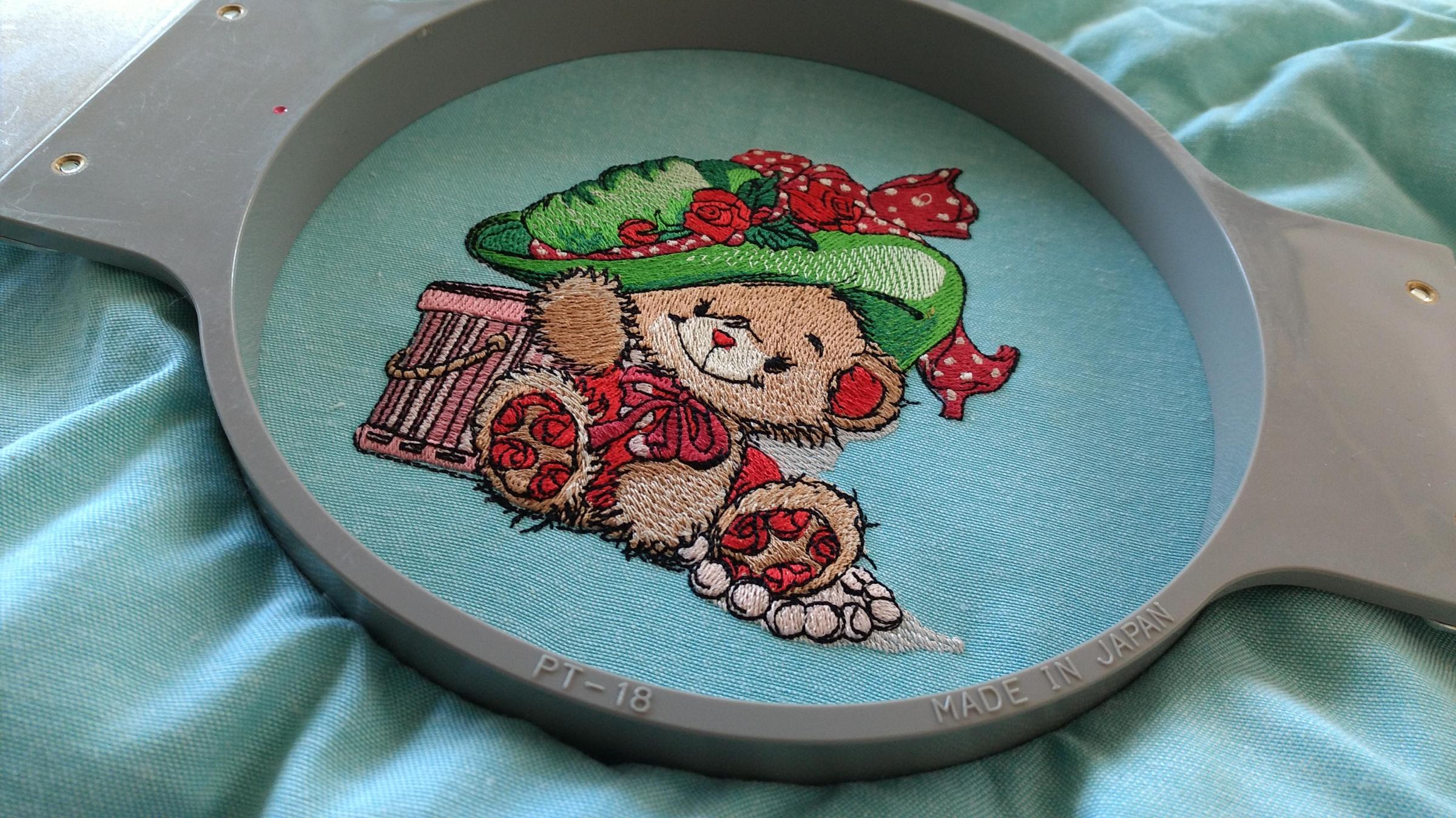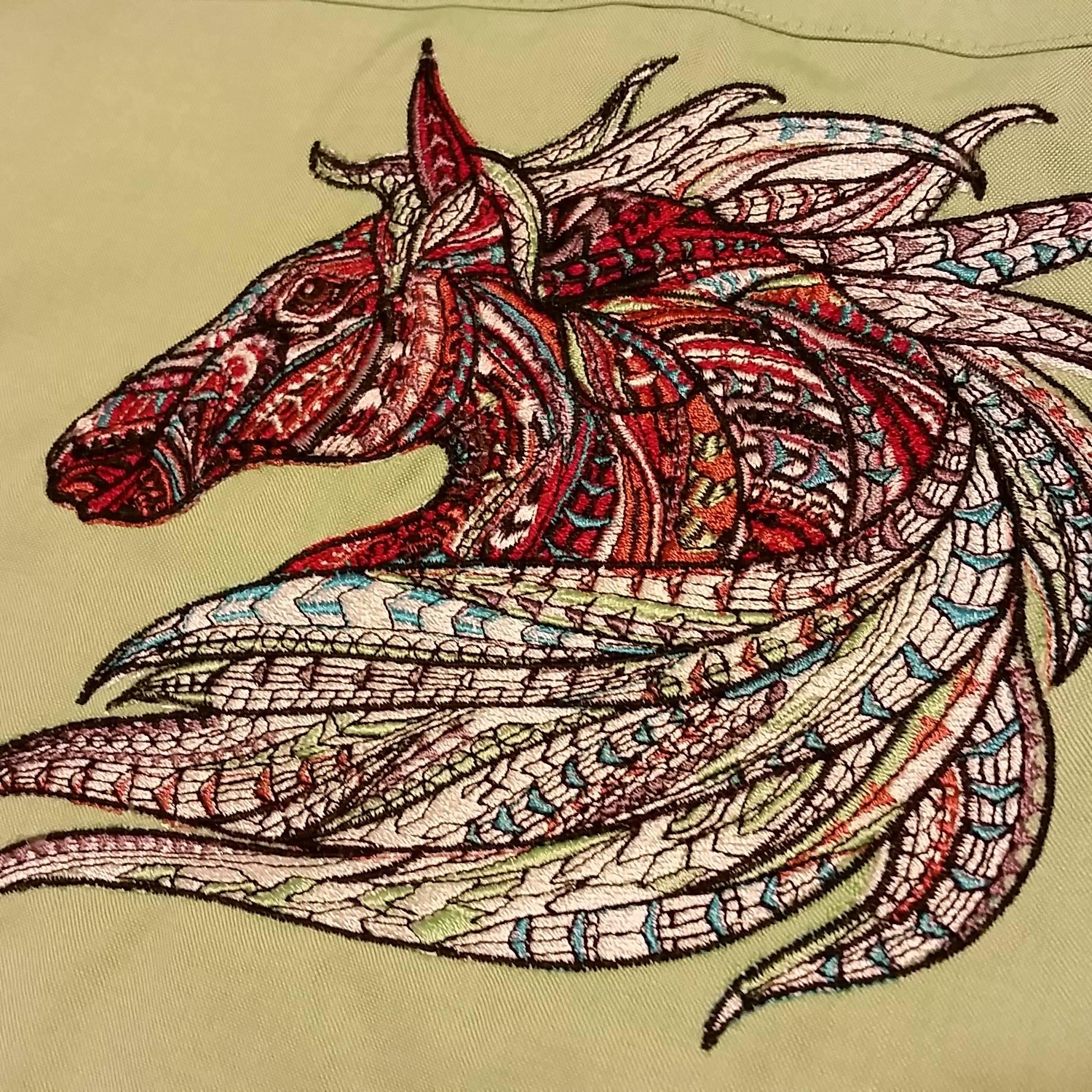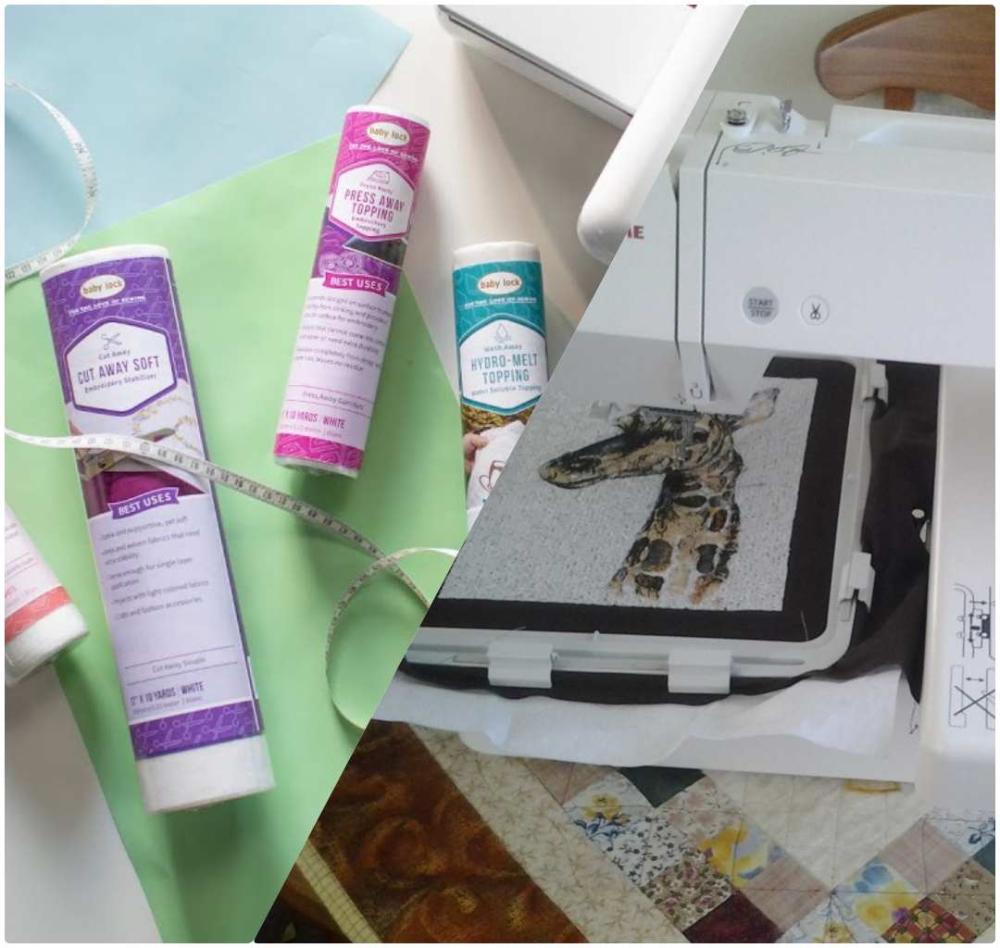Are you new to the world of machine embroidery? One of the first terms you'll hear is "backing" or "stabilizer." Embroidery backings are essential for creating stability when machine embroidering on any fabric, particularly stretchy knits and polyester performance shirts. When it comes to starting an embroidery project, choosing the right stabilizer is one of the most important decisions you'll make. Proper stabilization is the foundation of excellent embroidery, and choosing the wrong stabilizer can lead to poor results. In this article, we'll take a closer look at embroidery stabilizers and help you make informed decisions when starting your next embroidery project.

Fashion teddy bear embroidery design
What is an Embroidery Stabilizer?
If you've ever worn an embroidered shirt, you've probably seen embroidery backing before. It's the fabric that sits behind the stitches, providing support during the embroidery process. Embroidery backings are typically wet-laid nonwovens, which means they're made up of random fibers held together by a binder. The non-directional nature of nonwoven backings makes them strong and stable for use as embroidery stabilizers. However, it's important to use nonwovens specifically designed for machine embroidery. Some people advocate using things like coffee filters, newspaper, or paper towels as backing, but these products can break up during embroidery, causing excessive lint in your bobbin cases and machine parts.
What are the Different Types of Embroidery Backing?
There are three major types of embroidery stabilizers: Cut Away, Tear Away, and Water Soluble. Most backings come in different weights, usually advertised as ounces per square yard. The heavier the backing, the more stability it usually provides. A good backing supplier will sell many different weights, types, and sizes of stabilizer in both pre-cut sheets and on rolls.

Mosaic horse embroidery design
Cut Away Backings
Cut Away backings provide the most stability and remain on the garment, keeping it stable after being embroidered. With a Cut Away backing, after you finish embroidering, you cut away the excess backing close to the design, and the rest stays on the fabric. For beginner embroiderers, we always recommend using a cutaway with most unstable fabrics and anything you're going to wear. Cut Aways are inherently more stable and will be more forgiving with some of the mistakes you make when you're new to machine embroidery. They're a great choice for stretchy knits and polyester performance shirts because they prevent embroidered designs from stretching with repeat wearing and washing.
Tear Away Backings
Tear Away backings are removed, or torn away, from the fabric after embroidery. They're generally less stable than cutaways and are used for light support, on less stretchy fabrics, and items where the back may be visible, like towels and linens. With Tear Away stabilizers, you just tear away the backing when you finish embroidering. For large commercial shops, this can speed up the entire embroidery process when encountering large jobs. Tear Away can also be used in conjunction with a Cut Away to provide additional support during embroidery without adding additional bulk to the finished garment.
Water Soluble Stabilizers
Water Soluble Stabilizers dissolve when immersed in water. There are two types of Water Soluble Stabilizers (WSS) – a film type called Badgemaster and a nonwoven fabric type called Vilene. Both work the same way, and it's personal preference which one you use. WSS should mostly be used for free-standing lace (FSL) type applications, where you need the backing to 100% disappear. Remember, this backing dissolves in water, so if you use it as a regular stabilizer, you'll lose stabilization under the




There are no reviews to display.